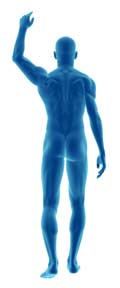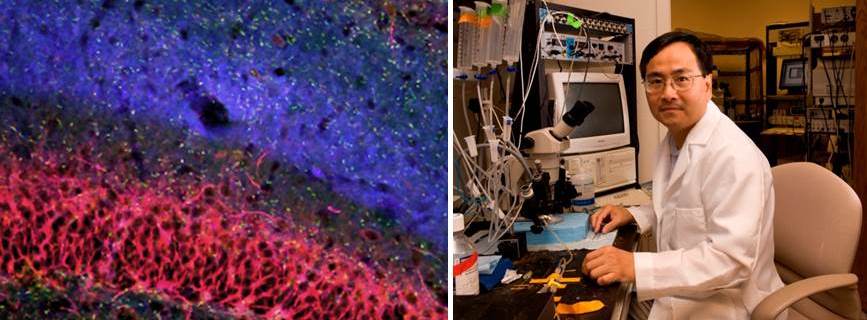Molecular Physiology
In order to treat neuromuscular diseases, scientists must first understand how nerves control muscle action under normal circumstances. UC Davis Neurology faculty members are working on understanding a crucial component of neuromuscular physiology: the working of ion channels.
Advanced Ion Channel Research
![By Andrei Lomize (Own work) [GFDL (http://www.gnu.org/copyleft/fdl.html) or CC-BY-SA-3.0 (http://creativecommons.org/licenses/by-sa/3.0/)], via Wikimedia Commons ion channels](/neurology/images/body/ionchannels.jpg) Ion channels are proteins found in the cell membranes of both neurons and muscle cells. Nerve cells communicate with muscle cells through the selective passing of ions, like sodium and calcium ions, through these channels.
Ion channels are proteins found in the cell membranes of both neurons and muscle cells. Nerve cells communicate with muscle cells through the selective passing of ions, like sodium and calcium ions, through these channels.
Our researchers are working to understand how these ions go through the pores created by ion channels and how these pores are opened and closed, a process called gating. These pores are so selective that they can let in a sodium ion, for example, while excluding a chloride one.
Researching Myotonia Congenita, a Debilitating Disease

Chloride channels are of particular interest because of a genetic mutation that causes a disease known as myotonia congenita. This disorder affects skeletal muscles. People with this condition experience bouts of sustained muscle tensing (myotonia) that prevent muscles from relaxing normally. The disorder, which begins to cause symptoms in childhood, occurs most often in the legs, causing muscle stiffness that can interfere with movement.
Our researchers are working to understand how a single mutation—a change in one of more than 1,800 amino acids that make up the protein—can lead to such a debilitating disease. They are using a highly sensitive method, called patch clamping, which allows them to measure electrical current going through a single ion channel in real time. They are also using fluorescence microscopy to directly observe the gating motion of the channel. The hope is that, one day, their work will lead to a treatment for myotonia and other neuromuscular disorders.

